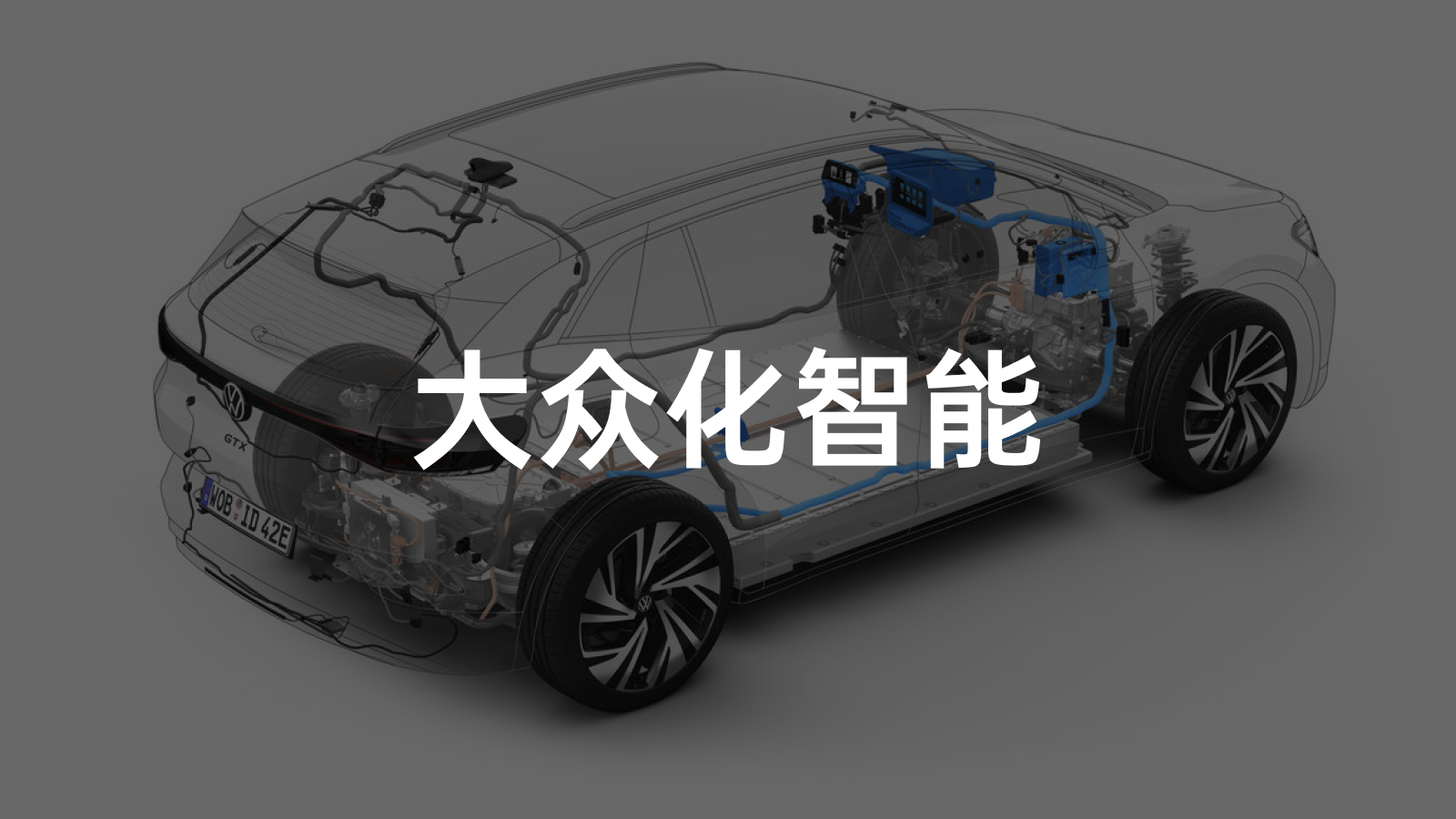Software-Defined Cars: Defining Cars Based on Consumer Demand
During a recent industry forum, a high-level executive from an automobile company expressed the viewpoint that the essence of software-defined cars is actually demand-defined cars. Consumers want cars that are easier to drive, have more connectivity and interaction, and come with a wider range of functions. As a result, the electronic and electrical architecture needs to be more advanced, and smart cars that meet these demands have become the trend in the industry.
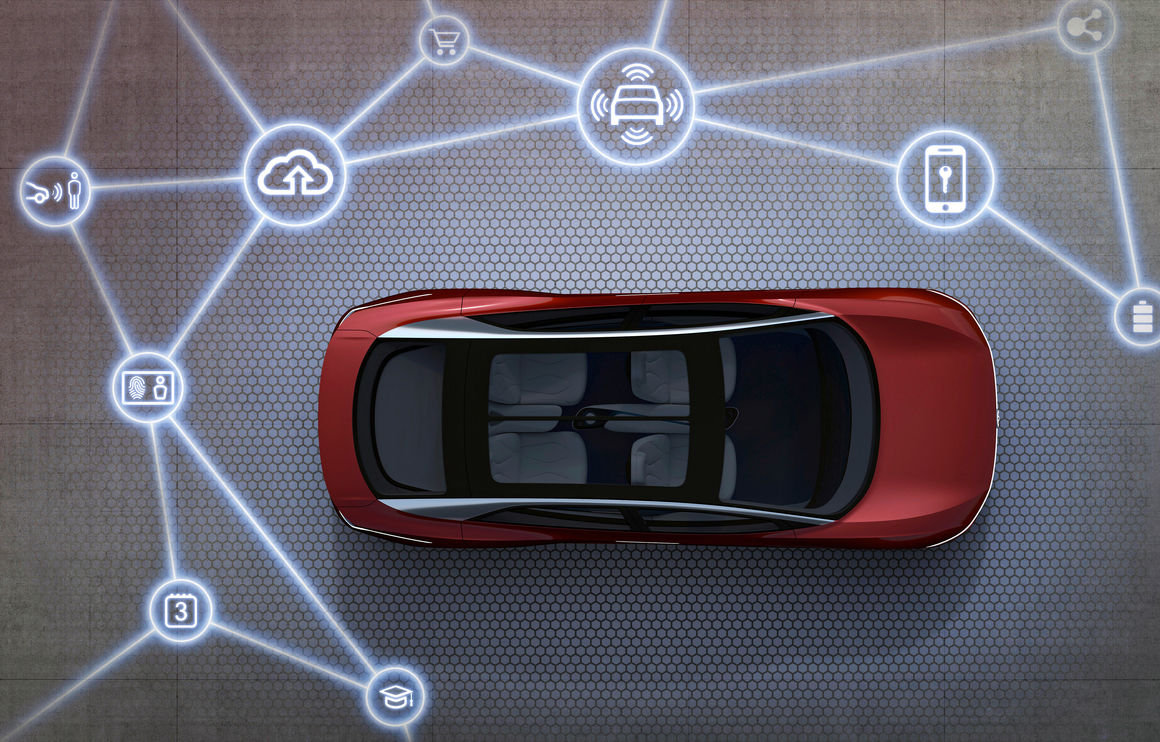
In recent years, new car manufacturers have shown acute awareness of consumers’ demands for intelligence. Without the constraints of a systematic structure, they have acted quickly and gained an advantage. However, objectively speaking, their market share is still relatively small in the overall automobile market. Therefore, from the perspective of user base, under this wave of intelligent trends, car companies with a larger market share should have greater influence in allowing consumers to experience this trend.
A Big Ship is Hard to Turn, But Turning is the Only Way to Keep Up
In 2020, over 76 million cars were sold globally, with the top five car manufacturers in terms of sales being Toyota, Volkswagen Group, Renault-Nissan-Mitsubishi Alliance, Hyundai-Kia Group, and General Motors. These five companies together took up half of the global automobile market share. However, when it comes to intelligence, it seems that these companies’ products don’t have much to do with the “cutting edge” of the industry.
Intelligence is Not Their Comfort Zone
From the perspective of companies, this situation is not surprising. Taking Toyota and Nissan as representatives of the Japanese market, the core reputations of these two companies among domestic consumers are being trustworthy, comfortable, and relatively reliable, and their corresponding products are mainly A-level and B-level models in the home car market. Therefore, adding intelligent content to these cost-controlled product lines will certainly encounter resistance.
Because if car companies decide to do this, it means the following:
- The hardware required for intelligence will raise the cost of the whole car.
- It is necessary to develop an electronic architecture that can support intelligent functions.
- Corresponding software costs need to be planned.
For a huge car company, the above are already considerable workloads. After that, another critical question is, can this part of intelligent content bring enough returns to the market?
Returning to the present, it is evident that the Japanese camp, which is dominated by traditional car companies, has indicated that they feel they can wait a little longer to embrace intelligence.

However, Volkswagen, also a traditional car company, has made a different choice this time.### More than just electrification: ID. series
Volkswagen’s ID. series is an important achievement of Volkswagen Group’s electrification strategy. Its MEB platform is the MQB for Volkswagen in the era of electrification and will lead to dozens of models in the next few years.

However, the less noticed aspect of the ID. series is that Volkswagen has adopted a new electronic and electrical architecture. This new architecture is called E3, and like the recent upgrade direction of automotive EE architecture, the functional control of the vehicle in the E3 architecture has become more streamlined and integrated, using a more powerful big core to replace the original multiple small cores.
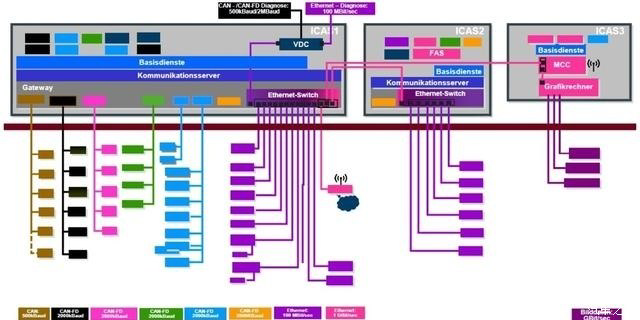
Finally, Volkswagen’s E3 achieves three-domain control, with the three major functional domains being:
- Vehicle control domain ICAS1
- Intelligent driving domain ICAS2
- Intelligent cockpit domain ICAS3
It can be seen that this structure is highly consistent with the concept of smart cars prevailing in the market. Although E3 may not be as magical compared to the most advanced automotive electronic and electrical architecture in the industry, you should know that this is Volkswagen, a company that sold more than 9.3 million cars last year. Compared with peers with similar scale, this architecture is already advanced.
However, due to time constraints, only the vehicle control domain ICAS1 and the intelligent cockpit domain ICAS3 have been developed in the E3 architecture, and the intelligent driving domain ICAS2 has not been fully completed yet. Therefore, the E3 architecture on ID.3 and ID.4, which has been introduced domestically, is in the state shown in the figure below.
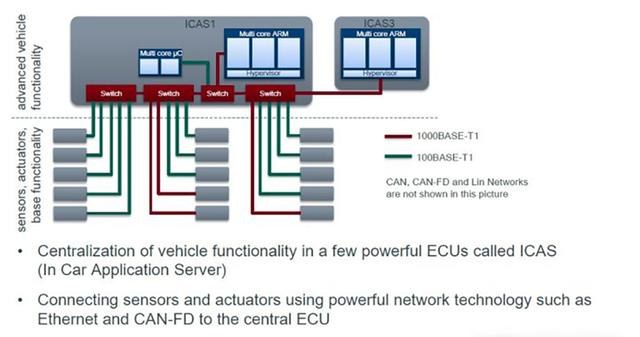
That’s the content at the architecture level. I think the actual product experience would be more intuitive.
A Not-so-“Volkswagen” Car
The ID. series has introduced ID.4 and ID.6 in China, and ID.3 has just been approved by the MIIT. For the detailed experience, I want to start with the ID.4 CROZZ, which is the one I am most personally familiar with.
Surprisingly Efficient Assistance Driving
Regarding the assisted driving of ID.4 CROZZ, I want to start with the name. In recent years, the naming of many manufacturers’ assisted driving systems has followed Tesla’s “XXX-PILOT” format, but Volkswagen calls its home-grown assisted driving system “IQ.DRIVE”.I personally appreciate such original naming, but it is difficult for those who have developed a thinking habit under the name “XXX-PILOT” to associate this name with the assisted driving at first thought.
This differentiated thinking is also reflected in the assisted driving setting page of the car’s console menu. Volkswagen did not use a text menu bar for the settings options of different functions, but instead used a modeled graphic menu. To be honest, when entering this menu for the first time without text guidance, it can be confusing, but after clicking on one of the options, you will quickly realize that the different graphics represent different function settings, such as lane lines representing lane keeping, and road signs representing speed limit reminders.
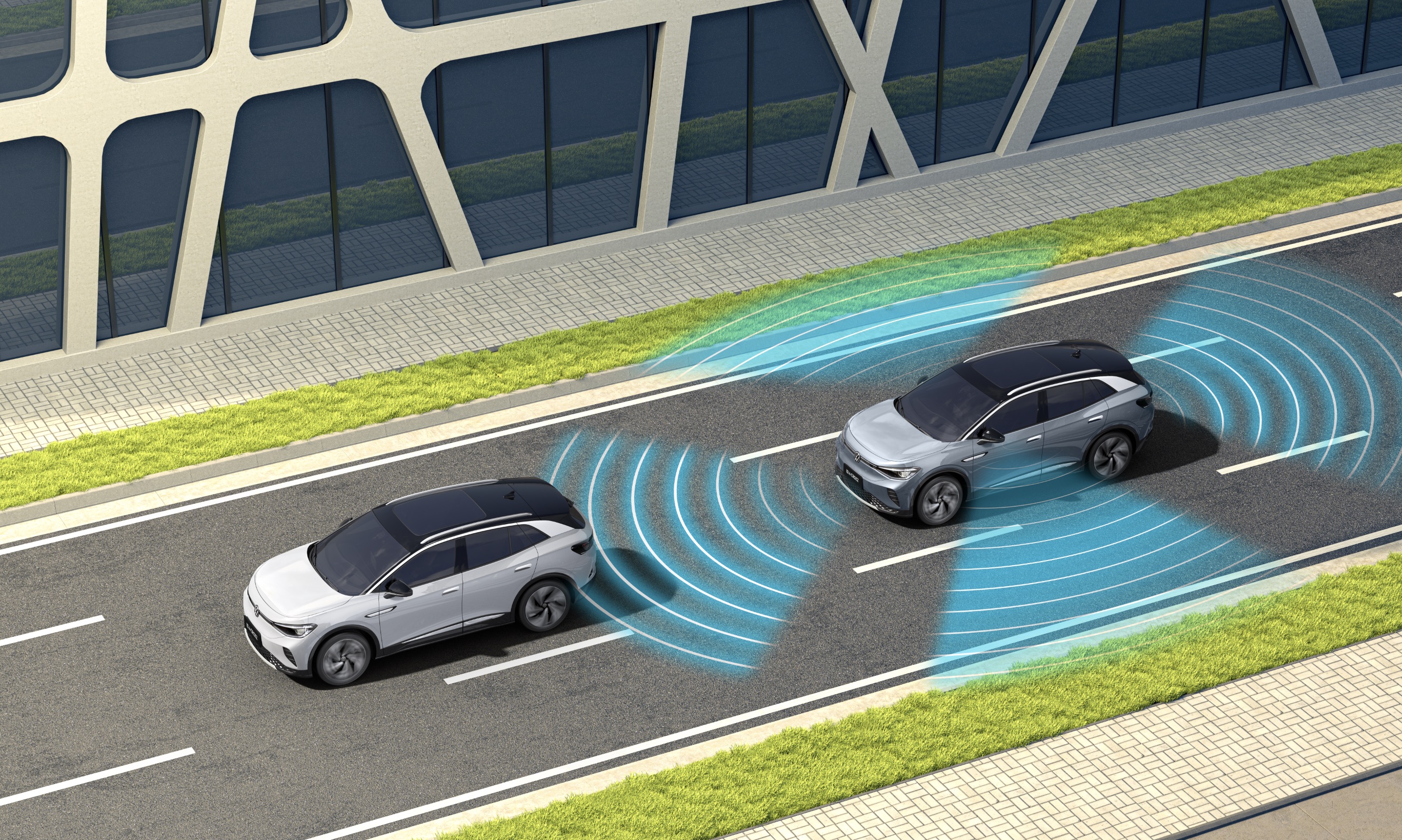
In terms of hardware, the ID.4 CROZZ’s assisted driving system includes one forward-facing monocular camera, four surround view cameras, three millimeter-wave radars, and eight ultrasonic radars. In terms of hardware, it is not among the most anticipated. In terms of functionality, this assisted driving system covers the most commonly used basic functions, but it does not offer functions like lane change with turn signal, automatic parking, or navigation-assisted driving. However, in actual use, the performance of this system surprised me.
Take the adaptive cruise control performance, for example. The system’s identification of the preceding vehicle is relatively timely, and the vehicle’s acceleration and deceleration actions start early and smoothly. There is no sudden acceleration after the preceding vehicle has traveled further or sudden deceleration when the vehicle is only a few car lengths away from the preceding vehicle, as I have experienced with some other cars before. The overall connection between the acceleration and deceleration actions is very smooth, without any impact.
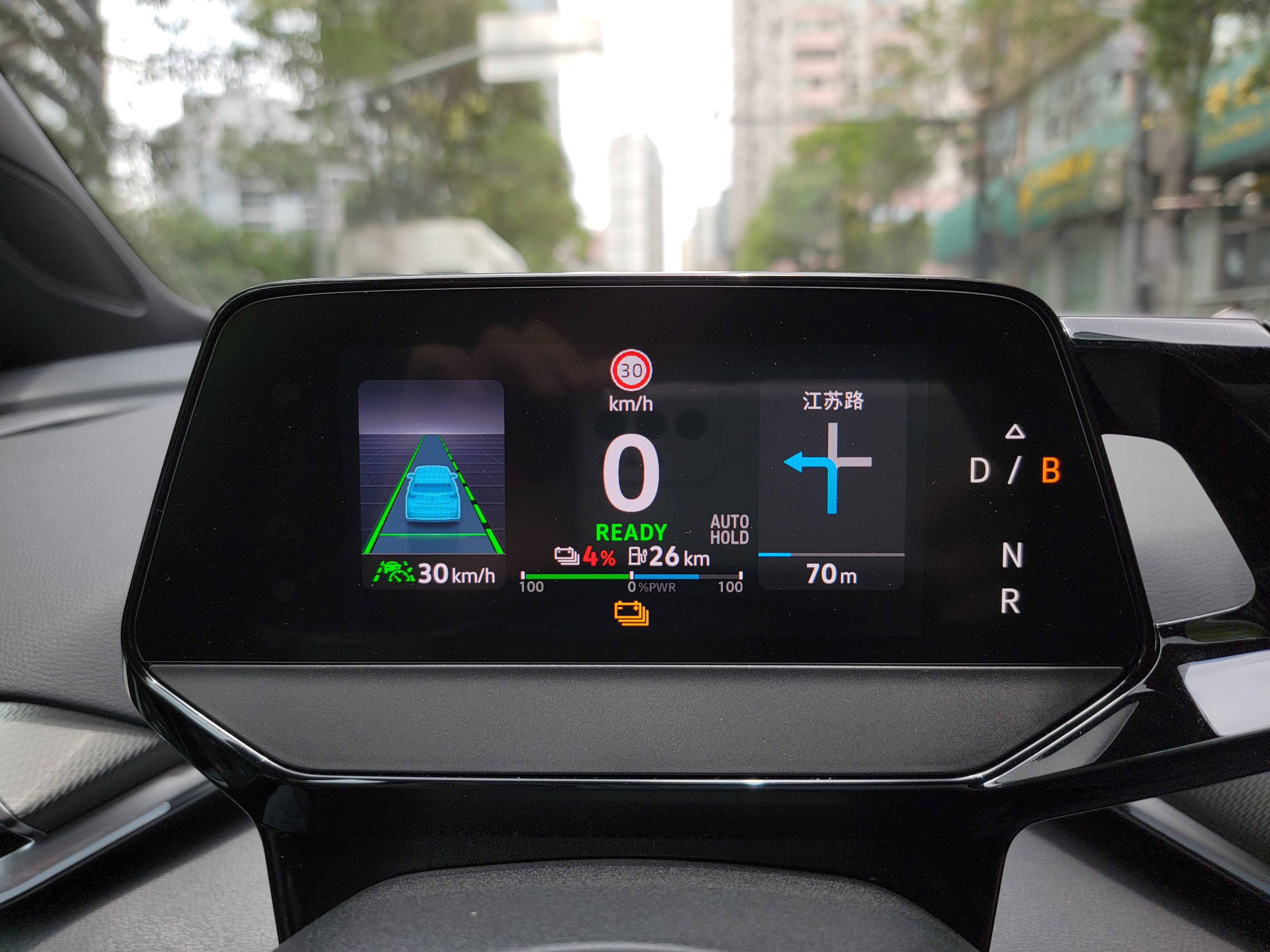
ID.4 CROZZ can activate assisted driving even when the speed is zero in congested traffic conditions, which I really like. Assisted driving with a speed restriction often fails to start in congested traffic conditions because the vehicle cannot reach the minimum speed to activate the system, making it unsuitable even in the ideal assisted driving scenario of heavy traffic.
In addition, this system also supports automatic startup when following a preceding vehicle from a stop, so it can also be used in stop-and-go scenarios. Another well-considered feature is that the system has a short follow-stop distance when the preceding vehicle is stationary, which I estimate to be between 2.5 m and 3 m, which is basically the same as the follow-stop distance when I am driving myself. It is the closest assisted driving follow-stop distance I have experienced in all the cars I’ve driven.This has the advantage that the average driver is less likely to cut in. However, the Tesla Model 3 performs very poorly in this regard. We measured a stopping distance of more than 5 meters in our 42Mark test, and being cut off in congested traffic is a common occurrence.
The ID.4 CROZZ, which performs well in acceleration and straight-line distance control, surprised me with its performance on turns. After activating the adaptive driving system on the elevated road in Shanghai, I rarely encountered exits caused by excessive turn curvature. The excellent lane-keeping ability in turns takes the usability of this adaptive driving system to another level. It can travel a long distance on the current lane without lane-changing actions.
Without the lane-changing function, the adaptive driving system of ID.4 CROZZ will automatically release Lane Keeping Assist after the driver signals, then automatically recognize the lane and re-enter the Lane Keeping Assist state after the turn signal returns to its original position.
To summarize, the “IQ.DRIVE” adaptive driving system has a high degree of completion in the basic functions used most frequently in daily driving, and has been carefully polished and considered in many details, which can be described as excellent. In my opinion, this adaptive driving system, which may only meet the passing grade in terms of functionality, can actually score much higher in terms of actual user experience.
Moreover, the fact that this is achieved with only one monocular camera and three millimeter-wave radars makes me more hopeful for fully intelligent driving under the future E3 architecture.
More Than Just a Smart Cabin
The front row of ID.4 CROZZ has a common instrument panel and center console dual-screen layout. However, it is obvious that the size of the instrument panel has been greatly reduced compared to previous Volkswagen models – this is mainly due to the inclusion of AR-HUD in the car.
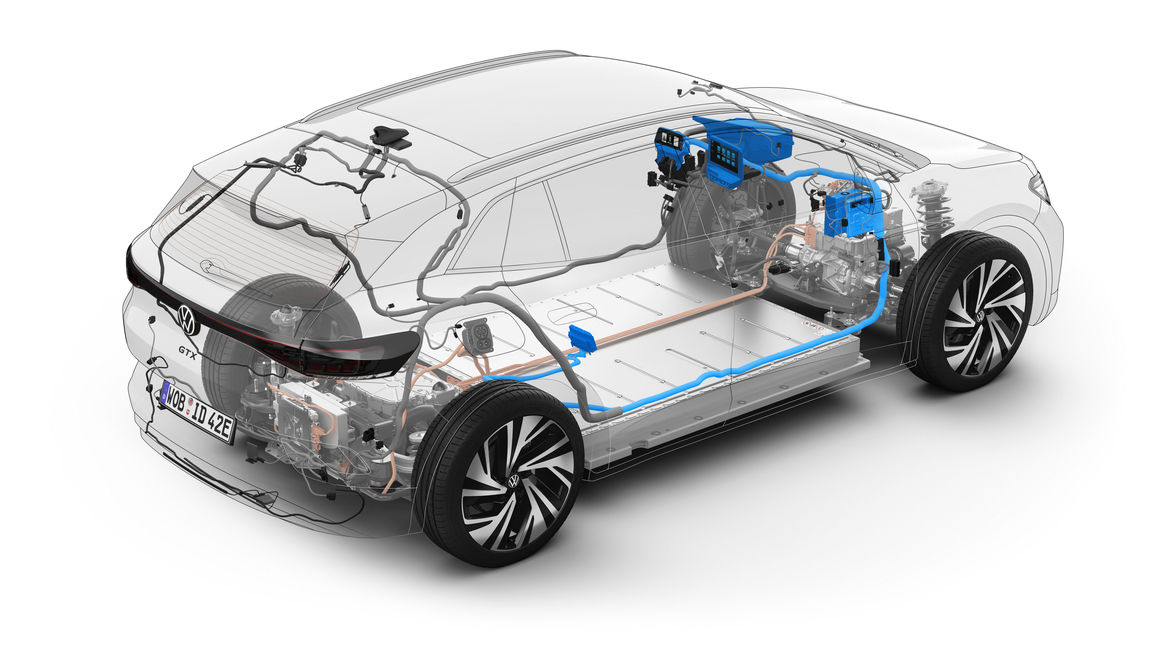 The AR-HUD device supplied by LG and occupying dozens of liters of space under the dashboard is quite bulky, but it enables the ID.4 CROZZ to display three-dimensional projections with AR effects on the front windshield, including commonly used navigation arrow prompts, dynamic distance displays for driver assistance, and lane departure warnings.
The AR-HUD device supplied by LG and occupying dozens of liters of space under the dashboard is quite bulky, but it enables the ID.4 CROZZ to display three-dimensional projections with AR effects on the front windshield, including commonly used navigation arrow prompts, dynamic distance displays for driver assistance, and lane departure warnings.
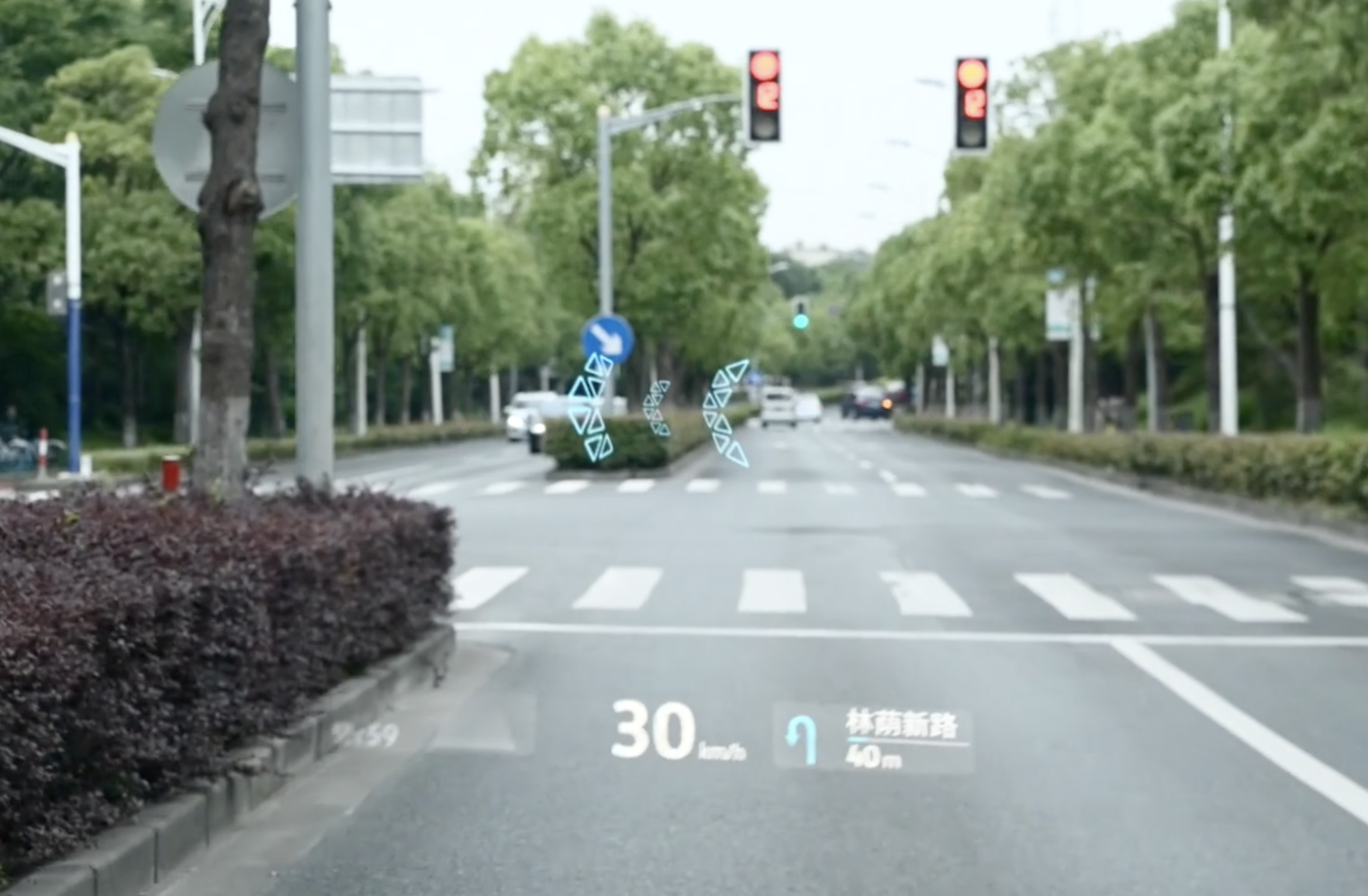
Compared to the dashboard, the HUD projected on the windshield can reduce driver distraction. This device with various AR effects allows this information to be displayed in a more intuitive and futuristic way.
In addition to the AR-HUD, there is also a continuous light strip called “ID.LIGHT” below the front windshield of the car. This RGB light strip is not just for decoration, as it is mainly used for interaction with passengers through various “light languages”.
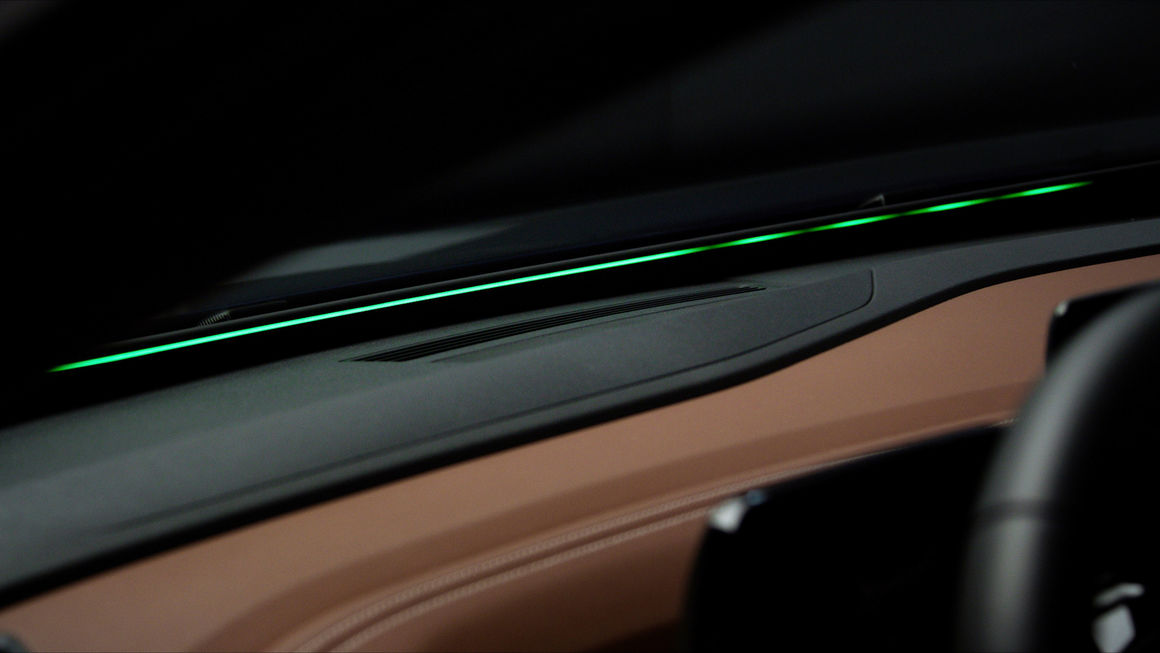
- When charging, ID.LIGHT turns into a battery indicator, showing the current battery level as a solid line and the part that needs to be charged as a dotted line;
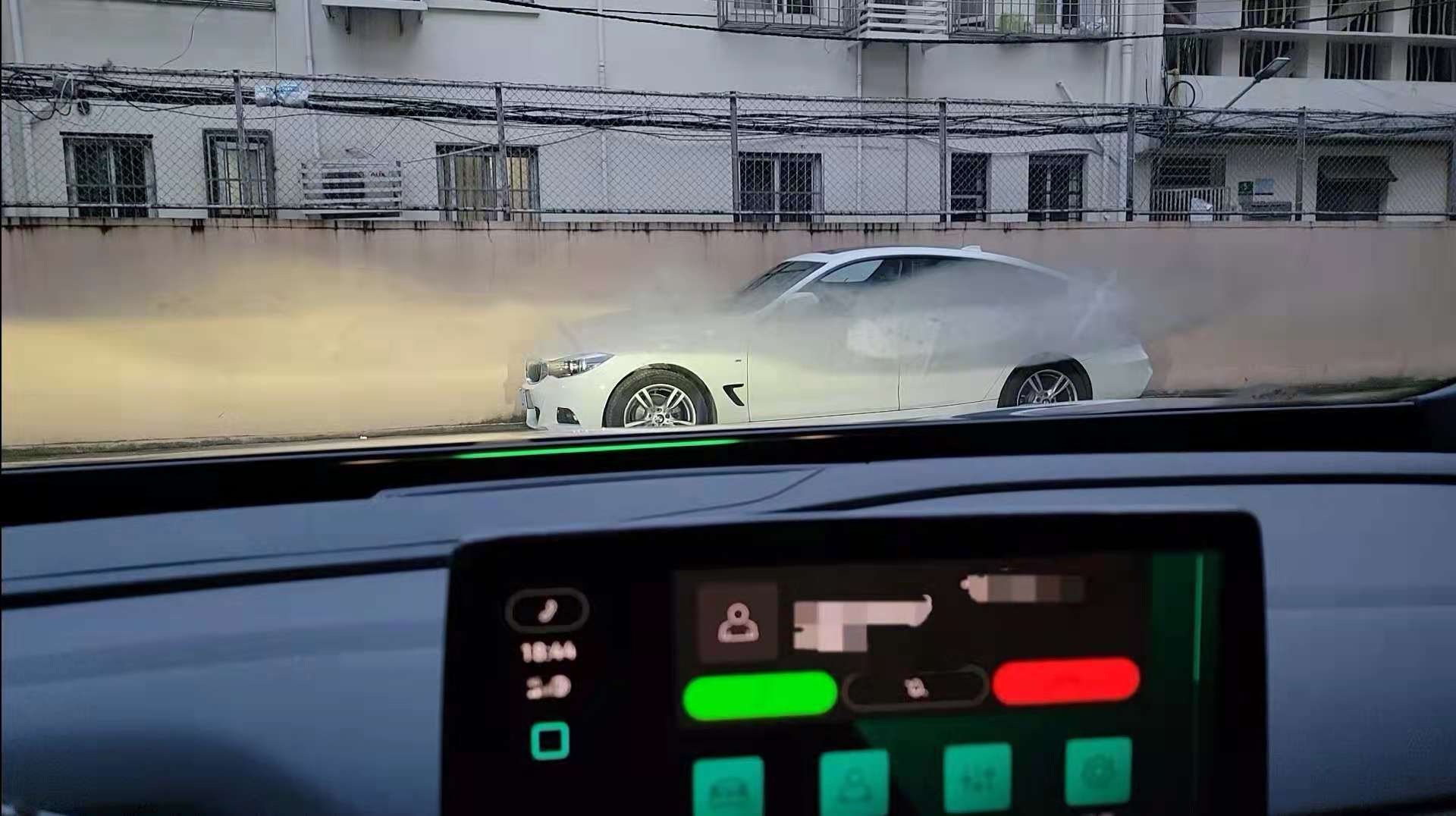
- When the phone is connected to the car’s Bluetooth, ID.LIGHT vibrates with green lights to notify the driver when there is an incoming call;
- When using the car’s navigation system, before arriving at an intersection, ID.LIGHT has a blue flow-like directional signal that lights up twice to indicate which way to turn;
- When a passenger uses the car’s voice recognition system to give voice commands, ID.LIGHT will automatically appear in front of the driver or front passenger with a white Siri-like light, depending on who gave the command;
- When a front collision warning is activated, the entire ID.LIGHT strip turns red to alert the driver to the danger;
- When the car is unlocked or locked, the light strip emits diffused or focused light signals.
While driving the ID.4 CROZZ, I felt that the ID.LIGHT did indeed bring me a better interactive experience. The light prompts are a relatively easy-to-perceive interactive method, but Volkswagen has reasonably controlled the color scene, frequency, and timing of different lighting information, so that during the driving process, I did not feel that these movements were too frequent or annoying, but rather a feeling of “less is more”.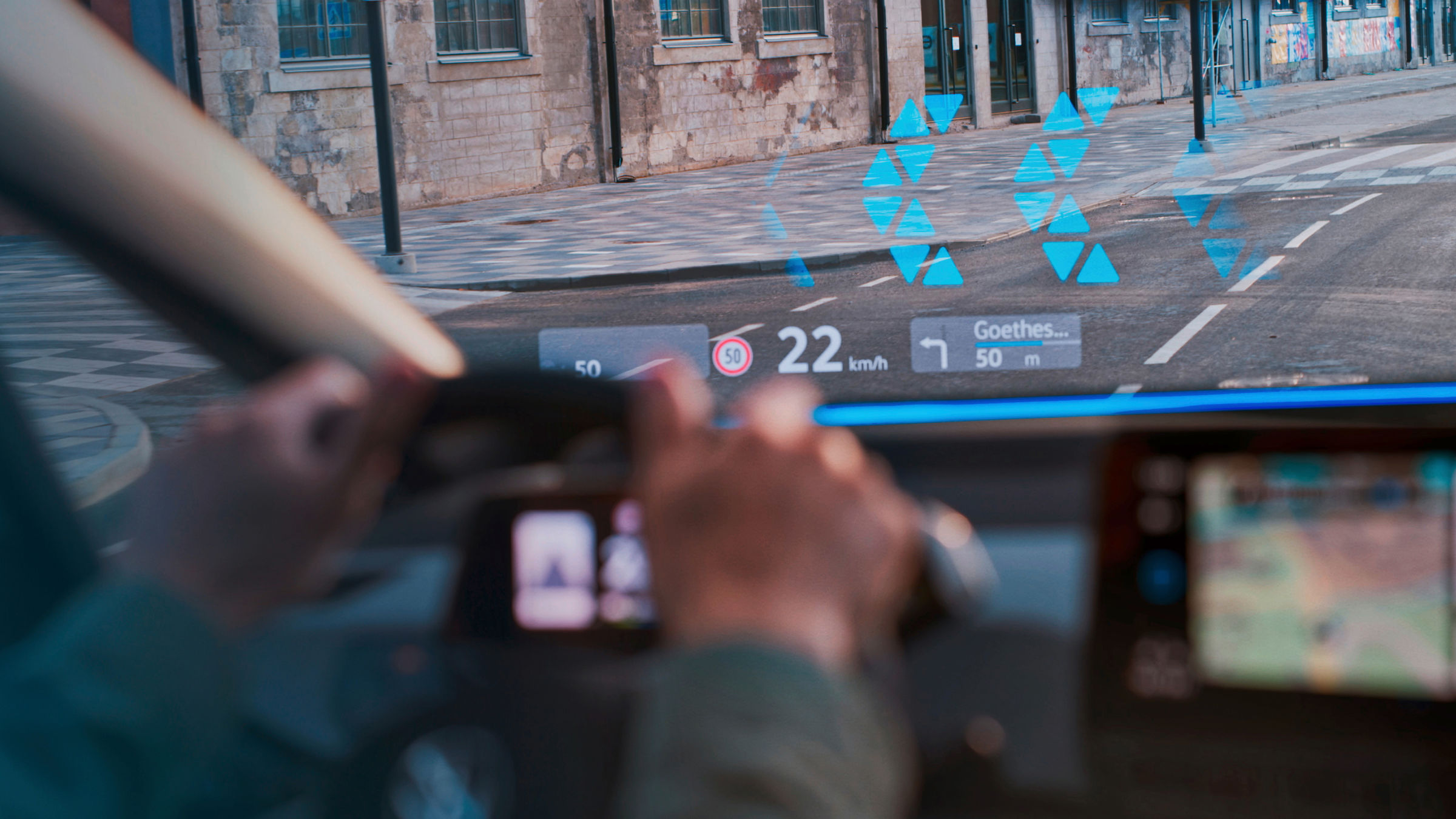
In addition, the ID.LIGHT with multiple colors, high refresh rate, and various dynamic displays is very smooth in visual effects, without any flicker or stuck pixel movement, giving a sense of high-end visually.
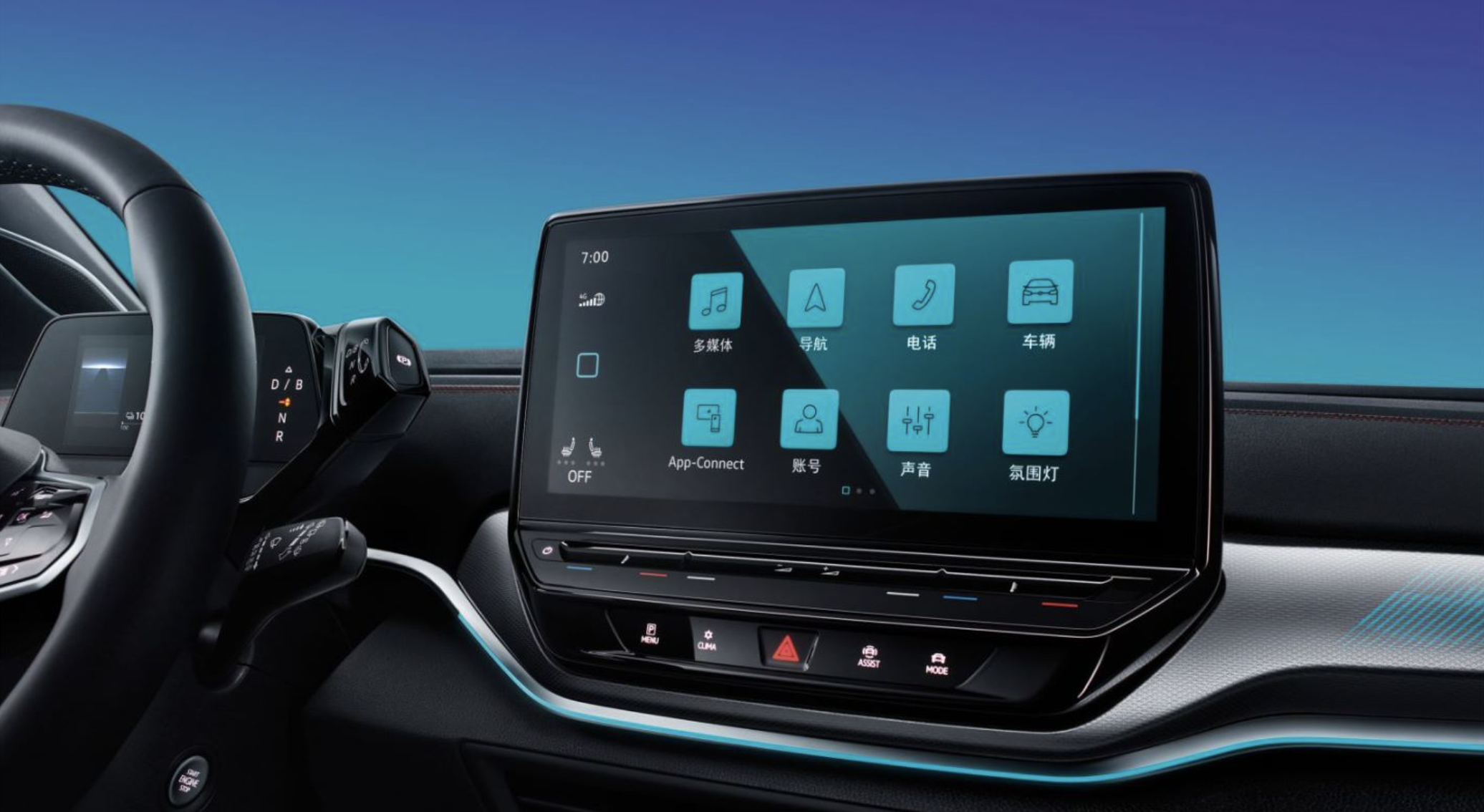
The central control screen is not so unique in comparison. The VW OS system installed in it is younger in terms of UI style and color matching than before, but the design of icons and menus is oversimplified and somewhat dull. The control hierarchy of the system is slightly complicated, and there is still some gap in its use experience compared to the newly manufactured cars.
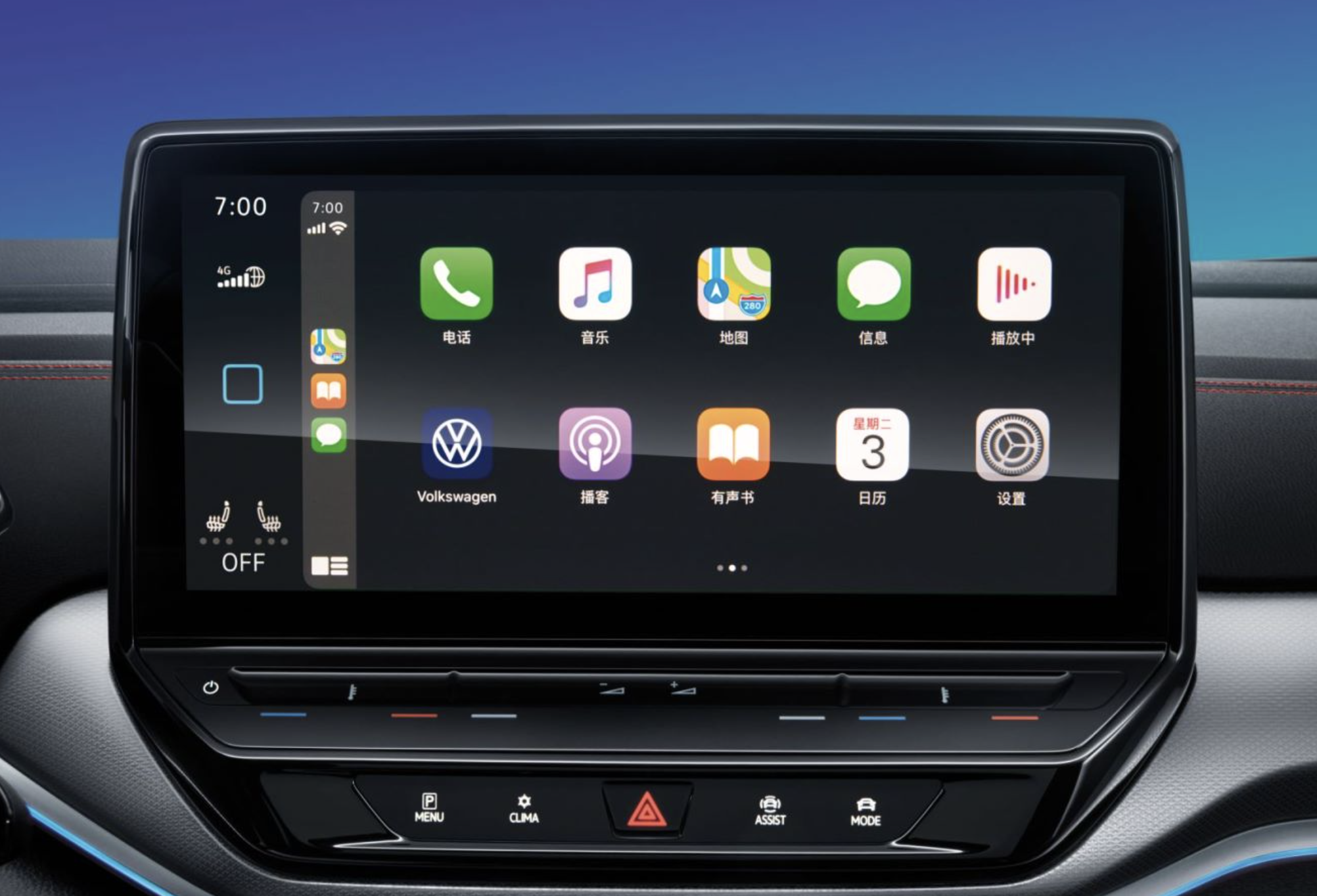
In addition, when the system loads frequent functions and pages are sliding, occasional frame drop or stuttering occurs, but the basic touch response and control of this system is still relatively fast. Gesture control, partitioned voice interaction, wireless Carplay, and wireless Carlife also make this system livable for basic functions.
In summary, I think the ID.4 CROZZ’s intelligent cockpit has many highlights, which shows that Volkswagen did put in efforts, and the result is not bad. However, consumers may pay more attention to the central control system, which still needs improvement in terms of user experience. If we ignore its traditional automaker identity, it is still a passable level.
From a user’s point of view, I think most of the commonly used functions in the car are basically available on the ID.4 CROZZ. However, as a mass-produced product, it still lacks higher-end experiences.
Thoughts on this car
Looking back at the new cars I have driven in the past six months, I feel that the ID.4 CROZZ is relatively “unconventional”. Unlike many new brand models, it does not intentionally and overtly exaggerate or surprise people with its appearance. Instead, it shows restraint and focuses more on practicality.
For Volkswagen, the ID.4 is a product for the global market and all consumer groups, so what it needs to do is to present the water bucket car model of the gasoline era in the form of an electric car. It may not have an extreme advantage, but it must not have a fatal flaw.可能正是这样的保守,让 ID.4 在国内这个深受新造车文化影响的市场上受到了阻力。但在欧洲市场,ID. 系列的大放异彩还是给了大众信心。
这可能也是 ID. 系列作为面向全球市场和百万级受众的产品线会面临的一些挑战:在某一特定市场下,注重均衡的产品反而显得没那么有特色。
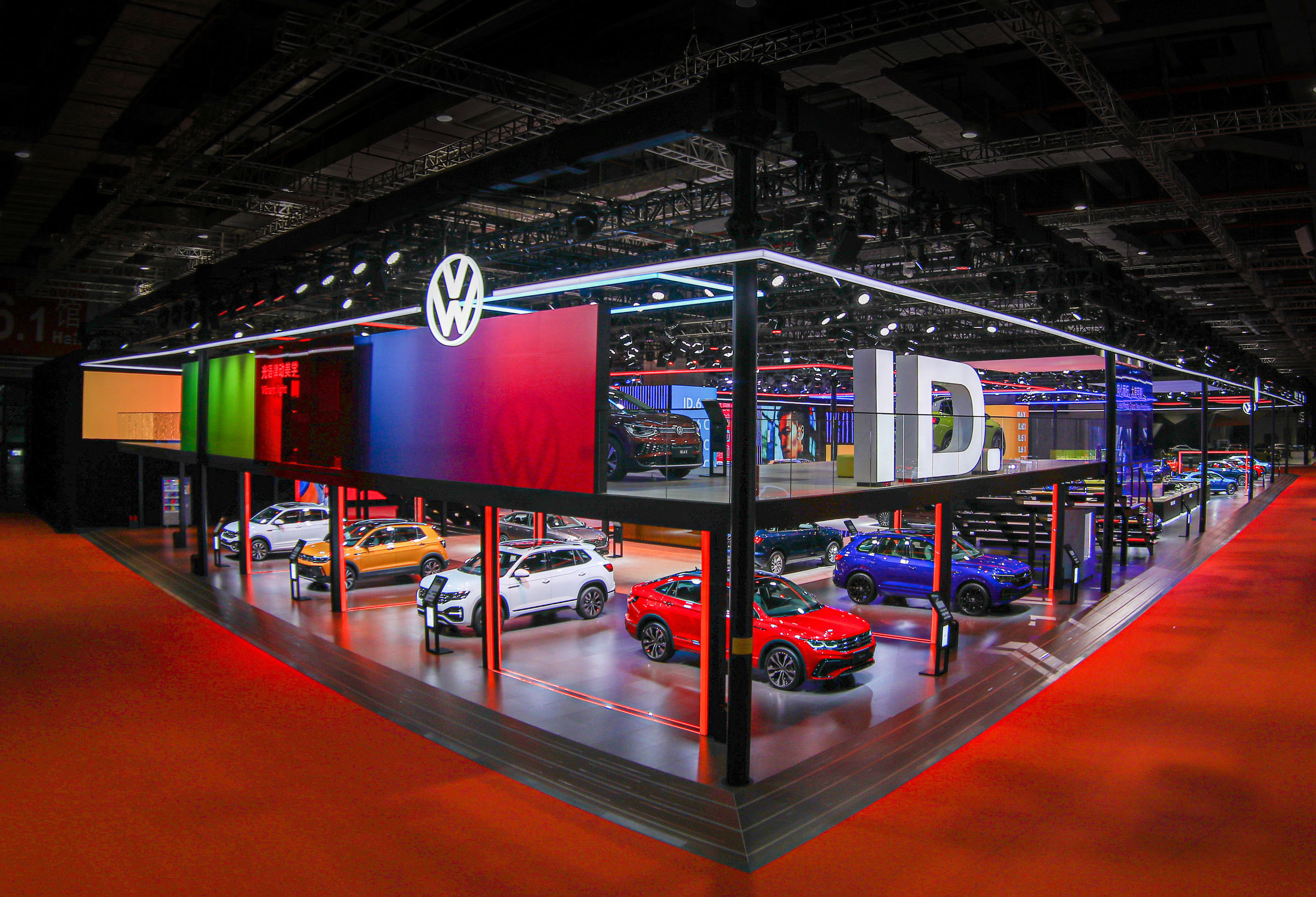
所以我认为,电动化时代,对于国内市场大众可能需要比燃油车时代要做更多的针对化策略。而另一方面,国内的电动车市场还处于高速发展的阶段,目前的这批用户相对而言还是更愿意接受新事物的人群。
但随着燃油车用户的转化逐渐变多,这台能力均衡、适应成本更低而且有着良好的基础智能化体验的 ID.4 对于那些需求偏中性的用户依然会有着自身的吸引力。
This article is a translation by ChatGPT of a Chinese report from 42HOW. If you have any questions about it, please email bd@42how.com.
